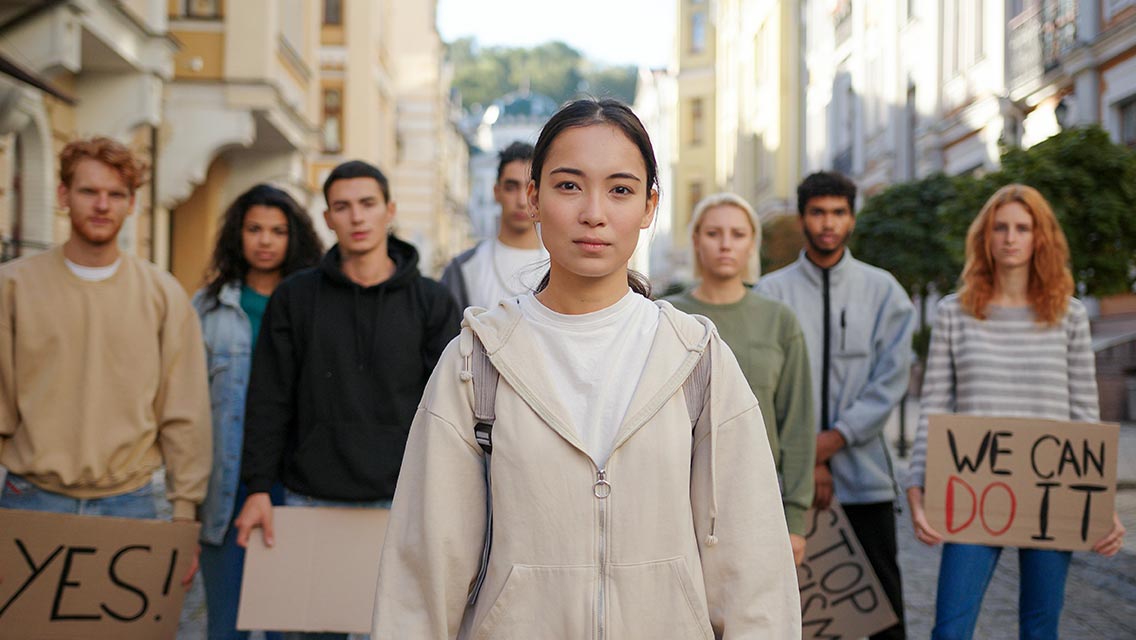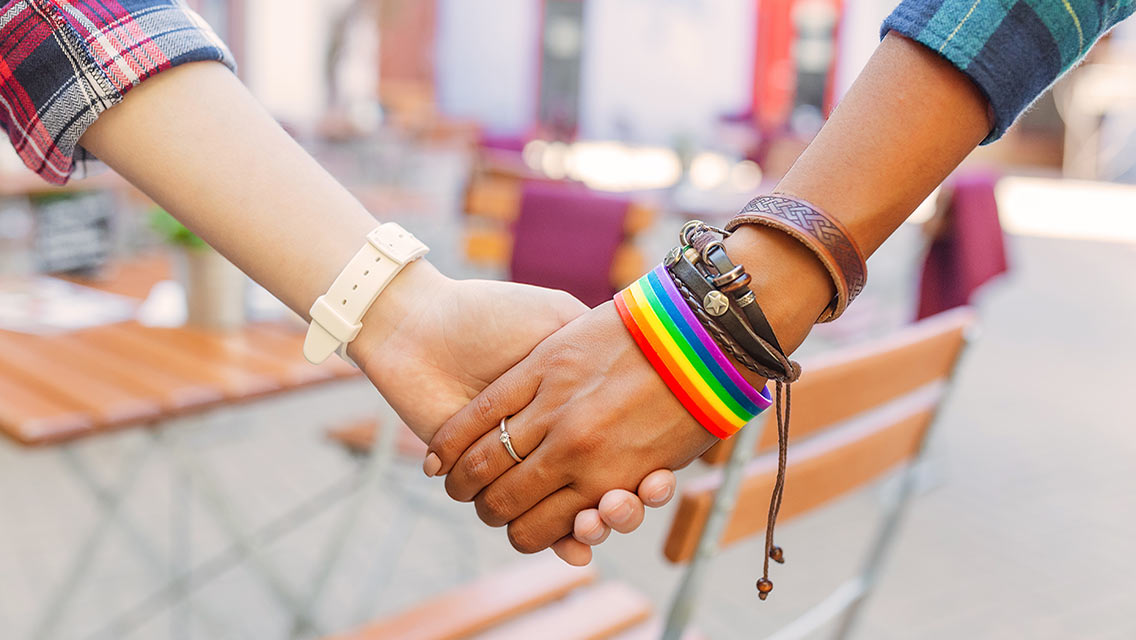More than one in four American adults — that’s more than 70 million people — live with at least one disability.
Some disabilities are visible; others, including many chronic illnesses, are not. Some disabilities affect mobility; others affect communication, development, learning, or behavior. Some people are born disabled; others become so through illness or injury. And many folks live with multiple disabilities.
Even if you aren’t disabled, chances are you love, work with, exercise with, go to school with, worship with, or ride the bus with someone who is. If you live long enough, you likely will become disabled yourself.
“There’s a saying that you can join the disability community at any time,” says activist and author Emily Ladau. “That’s not a threat. It’s just part of the human experience.”
Yet our society is not built for the human experience of disability.
Despite the achievements of the Americans with Disabilities Act (ADA) and other efforts, many disabled people cannot participate fully in society as it’s structured. People with disabilities still have limited access to spaces, technologies, and activities. They still experience discrimination, exclusion, and segregation in housing, education, healthcare, and the workplace.
We have a long way to go to create a more equitable society, and we are all called upon to be part of the solution. But we must first recognize how our assumptions about ability and disability are part of the problem.
Pervasive Ableism
In her book, Demystifying Disability, Ladau, who lives with multiple disabilities and uses a wheelchair, describes ableism as “attitudes, actions, and circumstances that devalue people because they are disabled or perceived as having a disability.”
Ableism presumes and prioritizes ability over disability and is woven into the fabric of everyday life, she says. Sometimes it’s blatant, such as when disabled people are passed over for jobs, when events are held in inaccessible locations, or when disability is mocked or used as the punchline of a joke.
Often, however, ableism shows up as well-intended behaviors that point to an unexamined belief that disabled people are “less than.” For example, telling someone they’re “so inspiring” for doing everyday tasks like grocery shopping is ableist, as is speaking to a disabled adult like a child or rushing to help a disabled person without checking if they need or want help.
Ableism is so entrenched in our culture that many of us even shy away from the word “disability.”
“There’s this fear that it’s a bad word,” says Ladau. “It’s stigmatized. We’re socialized to think about disability as a negative. But it really is the most straightforward, accurate terminology. It’s not a bad thing; it just describes a facet of somebody’s existence.”
How to Be an Ally
While noting that her perspectives on disability are not necessarily shared by all disabled people, Ladau offers guidance on how able-bodied people can shift out of an ableist worldview and truly support people living with disability.
Own your ableism. If you’re able-bodied, what drives your impulse to “help” people with disabilities? Is it pity, sympathy, or a belief that disabled people are helpless? “The first step to being an ally is unlearning this misconception and recognizing that disabled people aren’t in need of saving,” Ladau writes. “We’re in need of a world that recognizes our rights and our humanity without question.”
Mind your language. Ableist words and phrases are embedded in our vocabulary, she notes. Euphemisms like “differently abled” or “special needs” reject the reality of disability. Metaphors like “fall on deaf ears” trivialize hearing loss. Words like “crazy” or “lame” are often used in daily conversation to describe people or situations, but such words are considered by many disabled people to be outright slurs.
Work to fix systems, not people. “There are many things I encounter as a disabled woman that I find very challenging,” she says. “I’m not denying myself the opportunity for care, but I’m asking that people don’t try to ‘fix’ me, the human being. Instead, acknowledge that there are certain facets of my being that require support.”
“Nothing about us without us.” If you are a nondisabled person engaging with disability issues, yield the floor and hold the microphone for your disabled colleagues. “Disabled people should be at the center of the conversation,” Ladau says. “Be an advocate alongside. Be an advocate together. Don’t try to be the loudest person in the room.”
Think journey, not destination. We all must start somewhere in understanding that disability is part of the human experience, she says, and we will make mistakes. “Sometimes you’re going to say something harmful. Sometimes you’re going to do the wrong thing. Sometimes you’re going to offer help, and it’s going to be awkward.” The key is to remember that the person in front of you is a whole human being and not someone in need of charity.
Inclusive Health and Fitness Spaces
Disabled people benefit from health and fitness facilities as much as anyone else, yet they often face barriers the moment they come through the gym door.
“Imagine going to a fitness class and not seeing anyone who looks like you, or not seeing equipment you think you can use,” says Sarah Winchester, a personal training leader who specializes in adaptive exercise at Life Time in Frisco, Texas. “The possibilities for you there would seem limited.”
Here are some examples of everyday barriers disabled people face in health and fitness spaces:
Physical Barriers
- Equipment placed too close together or gear left in pathways, making it difficult to navigate the fitness floor safely
- Weightlifting platforms that don’t have ramps, making it harder for people in wheelchairs to access
- Cable and pulley handles that are not within reach
- Loud, pumping music that overwhelms people with posttraumatic stress disorder (PTSD) or sensory-processing issues
Organizational Barriers
- Having to pay extra for personal trainers just to make the facilities accessible
- Staff who are not trained to adapt exercises safely or for desired fitness outcomes
- Gym apps and websites that are not designed for people with visual, auditory, or cognitive disabilities, and online exercise demonstrations that don’t include disabled models
Social Barriers
- Cultures that emphasize “optimal” performance over health and well-being
- Stigma, rude comments, or staring
- Expressed assumptions about what a disabled person should or should not be able to do
- Group dynamics that feel exclusive instead of welcoming
Small changes can make a big difference in how all members experience health and fitness centers. As an advocate for making fitness more accessible, Winchester offers the following advice for trainers, staff, and members who want to make their spaces welcoming for all.
For trainers and staff:
- Seek out continuing education through organizations like the National Academy of Sports Medicine (NASM) or the American College of Sports Medicine (ACSM).
- Advocate for facility changes — such as equipment relocation or settings adjustments — to make machines and equipment easier to access.
- Get creative with gear and modifications to support your clients.
- Be human. “The No. 1 skill for trainers is basic human connection,” says Winchester. “Just be welcoming.”
For members:
- Put weights and other gear away when you’re finished with them. “It may seem tedious, but it does make a difference,” Winchester says.
- Lower machine cables and pulley handles to the halfway position when you’re finished so people can reach them without asking for assistance.
- If you’re able-bodied and regularly work out near or with someone who is disabled, introduce yourself and be friendly. Real connections break barriers and lift the feeling of isolation for everyone.





This Post Has 0 Comments